Surprise: Neutron Stars And White Dwarf Stars Aren’t Actually Stars
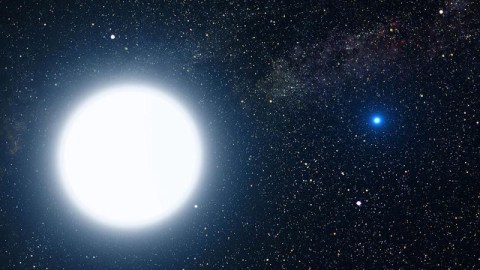
Just because you have “star” in your name doesn’t mean you are one.
When we think about the objects in our Universe, they fall into two categories:
- self-luminous objects, like stars, which generate their own light,
- and non-luminous objects, that require an external energy source to be seen.
The latter category, which includes planets, moons, dust, and gas, will only emit light if it’s either reflected from a luminous source or absorbed and re-emitted from an external energy source.
But does being self-luminous automatically mean that you’re a star? Surprisingly, not only are there many exceptions to that rule, but some of those exceptions even have the word “star” right there in their name, despite not being actual stars. Brown dwarf stars, white dwarf stars, and even neutron stars aren’t actually stars, while red dwarf stars, yellow dwarfs (like our Sun), and all giant stars do turn out to be stars. Here’s what makes all the difference.
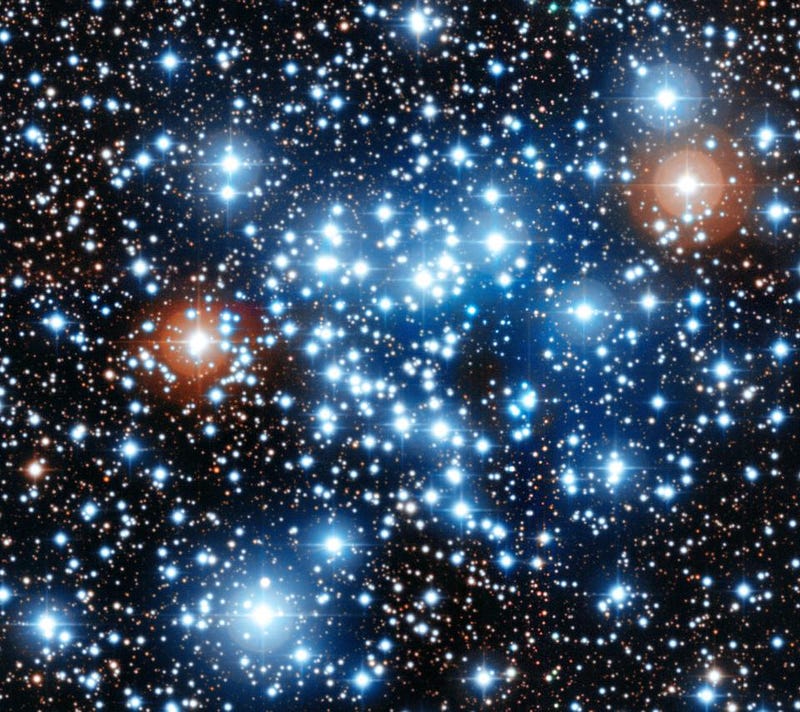
In our colloquial, day-to-day lives, most of us like to think that we know a star when we see it. We conventionally think of a massive ball of matter, giving off its own light, radiating energy out into the Universe. That’s true in a sense: all stars do actually do those things. They are massive clumps of matter, pulled into hydrostatic equilibrium by gravity. They undergo physical processes in their interior, which transfers energy outwards towards their surface. And from their boundaries — known as a star’s photosphere — energy, some of which falls in the visible light range, radiates out into the Universe.
All of those things are true of stars, but they’re also true of other objects, some of which aren’t stars at all. To an astronomer, there’s a more stringent threshold that needs to be crossed if you’re going to be a star: you need to ignite nuclear fusion in your core. Not just any type of fusion, mind you, but the fusion of hydrogen (raw protons) into helium, or the products of that reaction into still heavier elements. Without achieving this, astronomers cannot consider an object to be a star.

This might seem arbitrary, but there’s an important set of reasons for it: reasons that become clear if we begin from a cloud of gas, which is the origin of all stars that we know of in the Universe today. Gas clouds are found throughout the Universe, are primarily made of hydrogen and helium (with only a few percent of other, heavier elements added into the mix), and — if they get cold and massive enough, or have a significant enough instability in them — will begin to collapse.
When this gravitational collapse begins to occur, there will inevitably be regions that begin with greater-than-average densities of matter. These overdense regions will exert a greater attractive force on matter than the other regions, and so will grow denser over time. What then ensues is a race between different regions to draw in as much matter as possible. There’s a problem with this scenario, however: when gas clouds collapse, the particles inside collide and heat up, preventing them from collapsing further.

The only way out is if these collapsing clouds of gas can somehow radiate energy away: they have to cool themselves down. The most efficient way to do that is through those heavier elements, which are far better at radiating energy away than hydrogen or helium atoms alone. As the clouds develop regions of matter that become hotter and hotter, the heated gas begins to not only radiate, but to trap that energy inside, causing the internal temperatures to skyrocket.
This gas might be emitting light, but it isn’t a star, at least not yet. It could be considered a proto-stellar nebula, however, as it’s taking a path that could lead to it becoming a full-blown star. But in order to get there, its temperature needs to continue to rise, and that can only continue so long as matter continues to fall into this overdense region, growing it and trapping even more heat.
When the temperature rises over about 1 million K in the core, the very first fusion reactions begin to occur.
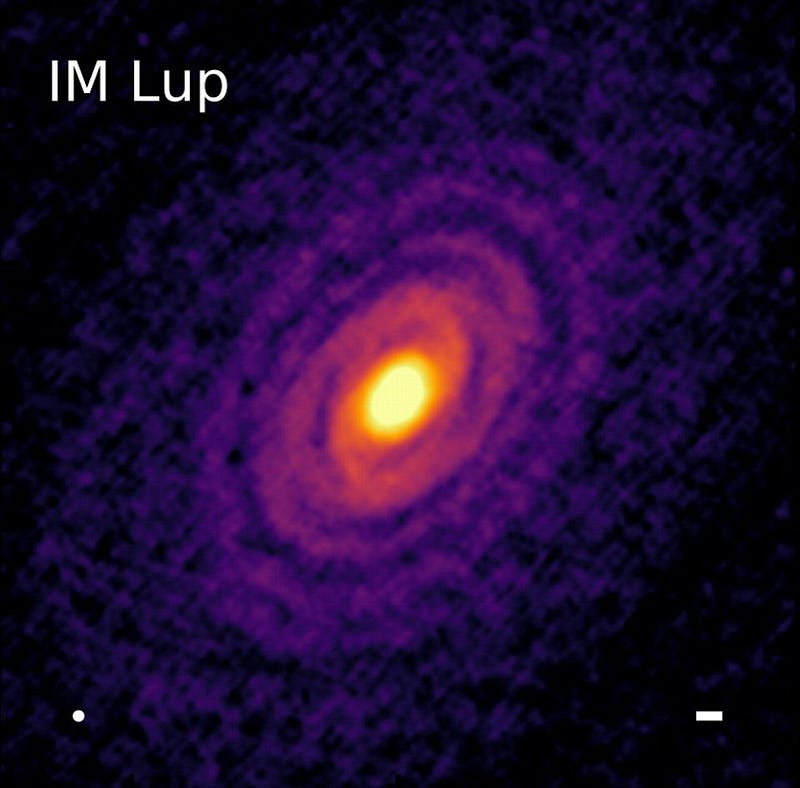
What happens first is that deuterium — an isotope of hydrogen made of one proton and one neutron — can fuse together with a free proton to form a helium-3 nucleus: with two protons and one neutron. When this threshold is crossed, the nebula officially becomes a protostar: a large mass of matter that’s still accruing mass from its molecular surroudings, whose core is supported by pressure. The deuterium fusion reaction that’s occurring provides that pressure, while gravitation counteracts it.
Under most circumstances, there will be many points in this large clouds of gas that race to grow and grow, siphoning mass onto themselves and away from the other protostars. There are winners and losers in this war, as some protostars will gain enough mass to heat up above ~4 million K, where they’ll begin the same chain reaction that powers our Sun: the proton-proton chain. If you cross that threshold, you’re a cosmic winner, as you’ll become a true star. But if you don’t, and you remain in this “limbo” where you only fuse deuterium, you’ll become a brown dwarf star: a failed star.
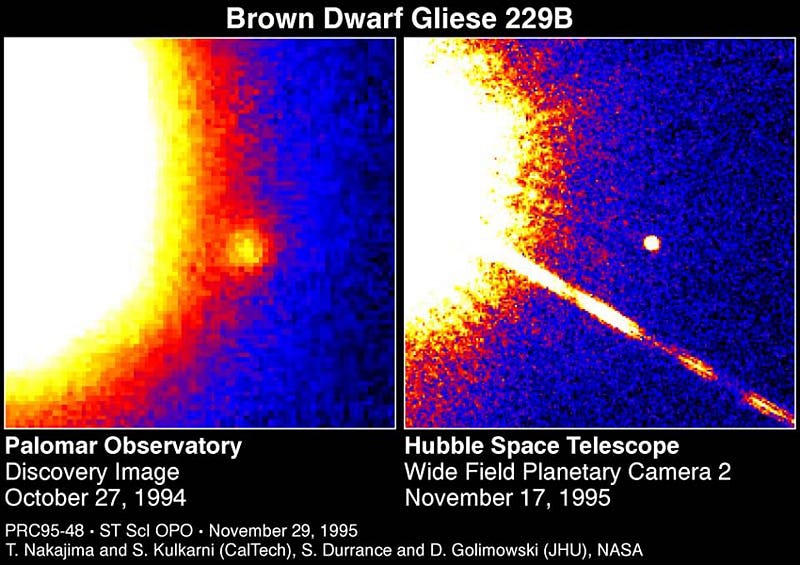
Brown dwarfs range in mass from about 13 times the mass of Jupiter up to about 80 Jupiter masses: about 7.5% the mass of our Sun. Although they’re often called brown dwarf stars, they’re not truly stars, because they don’t meet that critical threshold: they cannot undergo the fusion reactions that are required to become a full-blown star. If a brown dwarf ever merges with another or accretes enough mass from a companion to cross this mass threshold, it can raise its game to become a red dwarf star: fusing hydrogen into helium and becoming a true star.
These actual stars come in a wide variety of masses, colors, and brightnesses. The ones that range from 7.5% to about 40% of the Sun’s mass are the red dwarf stars: they will burn hydrogen into helium and that’s it; they will never reach higher temperatures to do anything else. Stars from 40% to 800% the Sun’s mass will eventually evolve into red giants, fusing helium into carbon when they do, before running out of fuel. And the even more massive stars will become supergiants, eventually going supernova when they reach the end of their lives.
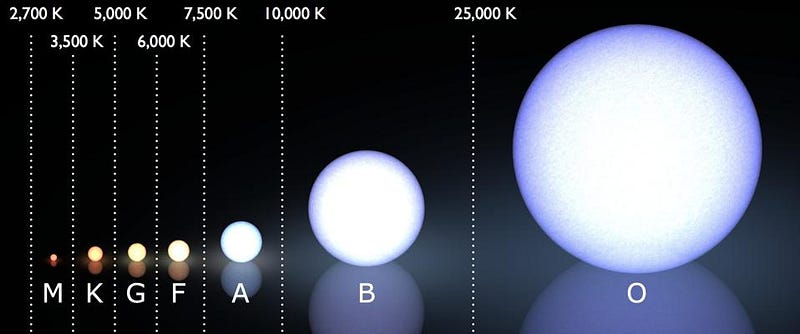
All the stars that burn hydrogen, helium, carbon, or heavier elements up to iron — whether they’re dwarf-sized, giant-sized or supergiant-sized — are all stars. So long as they’re converting light elements into heavy elements via the energy-releasing process of nuclear fusion, they can be considered stars. Some are stable, others pulse and flare. Some are constant, others are variable. Some are red, others are blue; some are extremely faint, others are millions of times as luminous as the Sun.
None of that matters; they’re all stars. For as long as nuclear fusion (aside from deuterium burning) occurs in the cores of these objects, they’re stars.
But there’s a finite amount of fuel in each of these stars, and a finite amount of mass that they will convert into energy via Einstein’s most famous equation: E = mc². When the fusion stops, and new fusion doesn’t proceed when the core contracts and heats up further, the star’s life is over. At this point, the only questions is what comes next.

As far as we can tell, there are five options, depending on the star’s mass and situation.
- Red dwarfs will be made entirely of helium, where the entire (former) star contracts down to a white dwarf star, eventually fading away to become a black dwarf.
- Sun-like stars will blow off their outer layers in a planetary nebula, while the core contracts down to a carbon-oxygen white dwarf star, eventually fading away to become a black dwarf.
- Heavier stars are destined to go supernova, where the lower-mass supernovae will produce neutron stars in their cores, up to about 2.5–2.75 solar masses.
- Higher-mass supernovae will still explode, but their cores are too massive to produce neutron stars, and will produce black holes instead.
- Or, in rare circumstances, the supergiant stars that would give rise to supernovae have their outer envelopes stolen away. In this fashion, “exotic” white dwarfs, like neon or magnesium white dwarfs, can be produced from the mass that’s left behind.
Those general fates, however — white dwarf stars, neutron stars, and black holes — represent what we know is possible.
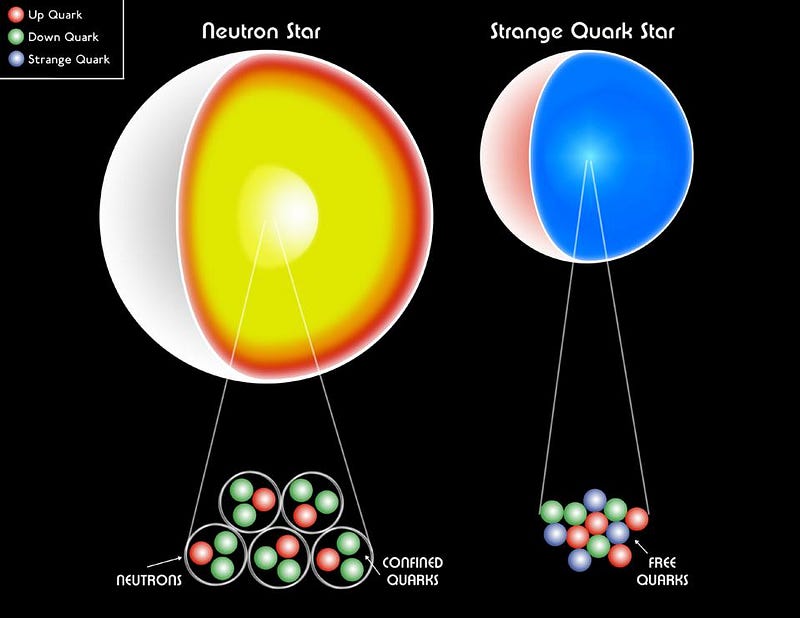
Sure, there are more exotic possibilities that can also occur. A neutron star can merge with a giant star, creating a Thorne-Zytkow object. A superluminous supernova or tidal disruption event can rip an entire supergiant star apart, leaving nothing behind at all. Or perhaps there are further degenerate forms of compressed matter — strange stars, quark stars, preon stars, etc. — that we simply have yet to discover and identify. Additionally, all white dwarf stars will cool and fade over time, turning red, then infrared, and eventually fading away to total blackness over nearly a quadrillion year timespan.
Despite the names of these remnants, they are not stars at all. Once they cease fusing elements in their cores, they’re only stellar remnants: what’s left behind by former stars. White dwarf stars aren’t stars; the black dwarf stars that they’ll become aren’t stars either. Neutron stars aren’t stars; neither are black holes, or (if they exist) any of the exotic stars like strange stars, quark stars, or preon stars. Thorne-Zytkow objects will remain stars so long as the giant star continues to fuse heavy elements; once it ceases, it’s a star no more.
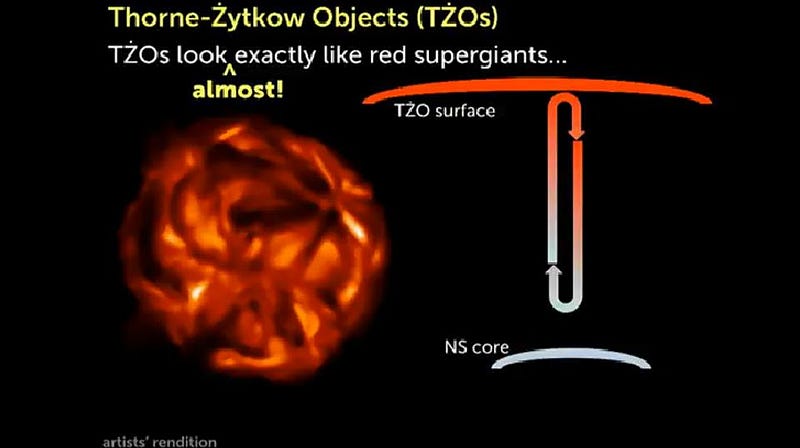
When you put all of this information together, we can draw a clear line between what is a star and what isn’t. If something has a collapsed core held up by radiation but is still gathering gas from a surrounding molecular cloud, it’s a protostar, not a true star. If something is fusing deuterium but nothing else in its core, it’s a brown dwarf star (i.e., a failed star), not a true star. Only if your core is successfully fusing hydrogen into helium, or helium (or heavier elements) into something more massive, at temperatures of 4 million K or higher, can you be considered a true star.
But once you’re done with that nuclear fusion in your core, you’re also done being a star. Any sort of stellar remnant — white dwarf stars, neutron stars, black dwarf stars, etc. — isn’t a star at all, but the leftover remains of a one-time star that’s now deceased. These remnants may continue to shine and radiate for trillions of years, longer than even the lifetime of the stars that spawned them, but they themselves are not actual stars, despite their names. You can still be brilliant without fusion in your core, but you can no longer be considered a star.
Ethan Siegel is the author of Beyond the Galaxy and Treknology. You can pre-order his third book, currently in development: the Encyclopaedia Cosmologica.





